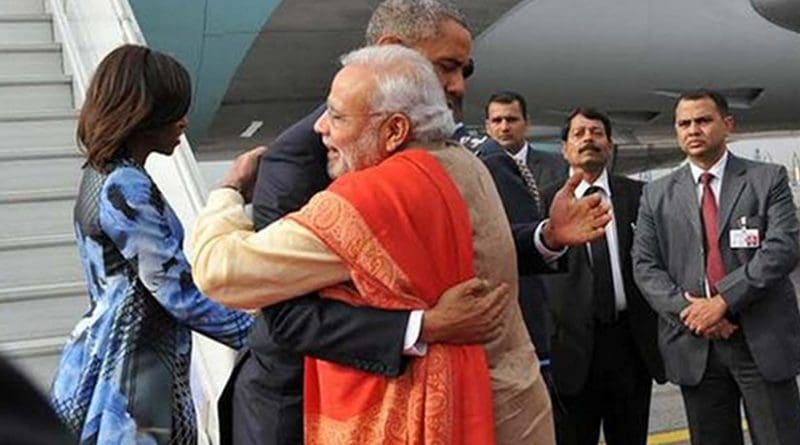India And US: Inching Towards An Informal Alliance – OpEd
By IPCS
By Chintamani Mahapatra*
US Secretary of State John Kerry’s recent visit to India, along with Commerce Secretary Penny Pritzker, to participate in the second Strategic and Commercial Dialogue with their Indian counterparts, and Indian Defence Minister Parrikar’s visit to Washington to meet with US Secretary of Defence to further strengthen bilateral defence cooperation have made it appear as if India and the US are inching towards shaping an informal alliance relationship.
Alliance was taboo terminology in India’s approach towards the world during the four decades of the Cold War era. The politically correct phrase was non-alignment. India never felt comfortable with alliance politics indulged in by the US and the former Soviet Union. Successive governments in New Delhi promoted non-alignment as a credible foreign policy strategy and backed the Non-Aligned Movement (NAM) consisting of the vast majorities of developing countries. Indian ideologues became defensive when critics described India’s closer defence and security ties with the former Soviet Union as antithetical to its profession of non-alignment policy.
The Indian government did not formally abandon NAM even after the end of the Cold War, although non-alignment slowly disappeared from the lexicon of Indian foreign policy and international relations. As and when Indian policy-makers came to terms with the new realities of the post-Cold War era marked by a sole superpower world order, the new mantra chanted by Indian strategic analysts came to be “strategic autonomy.”
As India was accused by critics of compromising its non-alignment by maintaining closer defence ties with the Soviet Union during the Cold War period, it faced similar reproach of compromising its “strategic autonomy” when India began to forge a strategic partnership with the US in the post-Cold War era.
However, the demands of the time, politico-security developments in the post-Soviet world order, rise of non-state actors as effective challengers of state sovereignty, nuclear capability of state sponsors of terrorism, meltdown of the Middle Eastern political order, end of the era of peaceful rise of China, among others, have required a new kind of strategic collaboration between India and the US.
The new strategic partnership project between India and the US that began since President Bill Clinton’s visit to India in March 2000 has gone through its varying pace and intensity from time to time, but after about fifteen years of its evolution, one may safely contend that there is no going back. The civil nuclear technology cooperation agreement, growing trade in arms and other military hardware, regular military exercises, new initiatives for co-production and co-development of defence items as part of the Defence Technology and Trade Initiative (DTTI) have cemented the strategic partnership between the two countries.
However, ‘strategic partnership’ is not a well-defined term and many commentators have actually come to joke about it. India has strategic partnerships with many countries, including China. What then is the brand of the Indo-US strategic partnership? Detailed examination will, of course, show the qualitatively different brand of India’s strategic partnership with the US than that with China.
The notable distinctiveness of the Indo-US strategic partnership consists of defence trade, technology transfer, military-to-military cooperation and most recently, the Logistics Exchange Memorandum of Agreement (LEMOA). This is one of the four fundamental agreements that have been under negotiation between the two countries. That it took so long to ink this agreement need not surprise anyone, since both the US and India are vibrant democracies and all stakeholders are allowed to participate in decision-making on critical issues. Now that LEMOA has been concluded, other agreements will be taken up for discussion.
Significantly, the discourse in India on Indo-US defence and security cooperation has matured to an extent where hardly any one raised serious opposition to LEMOA. As is in the US, a broad consensus seems to have been developing in India for robust defence and strategic ties with the US.
* Chintamani Mahapatra
Rector and Professor, JNU, & Columnist, IPCS

